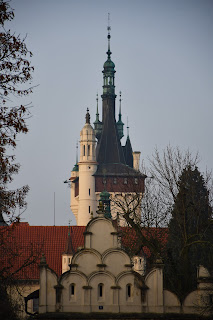Day 15: Oregon
Today was a grey day and the first day – barring the morning that followed our exhausting night at the hiker’s lodge in Grand Teton – when I was woken up by my phone’s alarm. For the first time on this trip, it started to feel like autumn; some leaves were changing colour, and some were falling to the ground, while the temperature dipped into coat-wearing territory. At first, I found this change relieving for my arms, which the sun had been roasting every minute they spent extended towards the steering wheel. Throughout the day, however, we would come to ascribe our exceeding weariness to the dreary weather.
We crossed
over into Oregon in the morning. The landscape did not immediately change from
that of coastal Washington, but one difference we did note was the abundance of
art-deco bridges. After doing some research I found that almost all of them
were constructed in the interwar years by one man – Conde B McCullough – as
Highway 101 first took form.
We made our
first few stops at Cannon Beach, a shore known for its beautiful rock
formations nestled in a wide stretch of sandy shores. I originally thought the
beach’s name was derived from the biggest of these rocks, which vaguely
resembles a cannon ball buried in the sand. In fact, it was named after a washed-up
cannon that was discovered at the beach in 1898.
From there,
we continued along the 101 to the central part of Oregon’s coastline. The first
place on my list in that region was the area around Thor’s Well – a beautiful
deep sinkhole eroded by the sea. I imagine it must have been named by the local
Nordic community, as we have passed by several places claiming Finnish and
Norwegian heritage. At first, we thought another one of the nearby parts of the
eroded coastline must be the well, as the sea pounded against it like a hammer,
producing a powerful noise. Standing on the hill above the coast, however, I
found that we had almost missed the real well, which was further out to sea.
As Kelly refused to join me on my venture, I approached the well alone. The tide was rising, and the waves had chased away the last tourists who had dared to approach the site. Blithely, I imagined that the biggest risk would be slipping on one of the rocks, so I took great care to place my feet very securely with each step. Finally, I found my way to the well and began to take pictures. Only a split second before disaster struck did I realise that a big wave had begun to build up and was coming right for me. I was perched on a little rock close to the well, but it was not high enough to protect me. First my shoes, then the bottom part of my trousers felt the fury of the waves. The water kept climbing higher and I became more nervous until eventually, the waves began to subside again. I leapt into safety, nonchalantly taking a few more pictures along the way as though I had intended to get wet all along.
There was
little I could do with my soaked shoes besides trying to ignore the cold
sensation while enjoying the rest of the itinerary. Luckily, the latter was not
difficult to do. From a lookout point near Heceta Head Lighthouse, we spotted a
group of sea lions lying about the foot of a cliff. They were far away, but we rejoiced
that we would not have to pay entrance fees for the tourist trap that is the
Sea Lion Caves. Following a friend’s recommendation, we also visited the
Darlingtonia State Natural Site, a reserve for hundreds upon hundreds of rare
pitcher plants.
That
evening, I ate seafood for the second time during the same day, after which I
alternated between updating my blog and trying desperately to dry my shoes
using a hotel hairdryer. Both my meals were delicious – we ate lunch at the
Fish Peddler at Pacific Oyster and got our takeout dinner from Barnacle Bistro.
Kelly and I
drove 367 miles today, with the total now standing at 5356.
A pitcher plant flower
The path through the natural site
The bridge from the parking lot





























Comments
Post a Comment